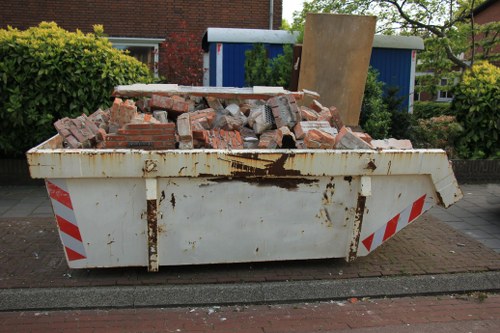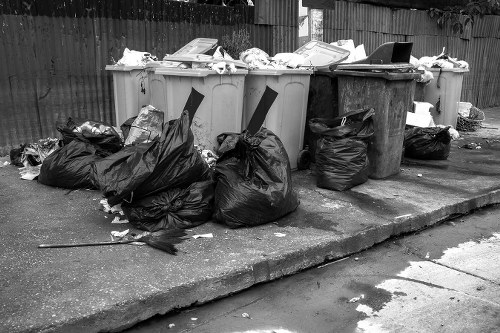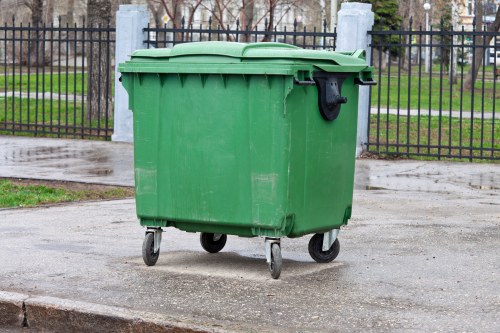Effective Flat Clearance in Temple: A Comprehensive Guide
Understanding Flat Clearance

Flat clearance, also known as temple flat clearance, is a crucial process in managing and organizing spaces within temples. It involves the removal and proper disposal of unused or unnecessary items to maintain a serene and functional environment for worshippers.
In the context of a temple, flat clearance ensures that the sacred space remains uncluttered, promoting a peaceful atmosphere conducive to prayer and meditation. This process not only enhances the aesthetic appeal of the temple but also contributes to the overall spiritual well-being of the community.
The importance of flat clearance cannot be overstated. A clutter-free temple allows for better airflow, improved cleanliness, and a more organized space, all of which are essential for maintaining the sanctity of the temple environment.
The Importance of Flat Clearance in Temples

Flat clearance in temples plays a vital role in preserving the sanctity and functionality of these spiritual spaces. Over time, temples can accumulate various items such as old furnishings, unused equipment, and other miscellaneous objects that can detract from the temple's primary purpose.
By regularly conducting flat clearance, temple administrators can ensure that the space remains inviting and conducive to worship. This not only enhances the experience for devotees but also aids in the proper maintenance and longevity of the temple facilities.
Moreover, a well-organized temple can better accommodate large gatherings, ceremonies, and special events, ensuring that all activities proceed smoothly without any hindrances caused by clutter or disorganization.
Steps Involved in Flat Clearance

Implementing an effective flat clearance strategy in a temple involves several key steps:
- Assessment: Evaluate the current state of the temple to identify items that need to be removed or relocated.
- Sorting: Categorize items based on their importance, usage, and condition.
- Disposal: Properly dispose of items that are no longer needed, ensuring that recyclable or reusable materials are handled appropriately.
- Organization: Reorganize the remaining items to optimize space and functionality within the temple.
- Maintenance: Establish a regular schedule for flat clearance to maintain a clutter-free environment.
Each of these steps is essential for ensuring that the flat clearance process is thorough and effective, leading to a more harmonious and serene temple atmosphere.
Best Practices for Flat Clearance

Adhering to best practices can significantly enhance the efficiency and effectiveness of flat clearance in temples. Here are some recommended practices:
- Plan Ahead: Develop a clear plan outlining the objectives, timeline, and responsibilities for the flat clearance process.
- Engage the Community: Involve temple staff and devotees in the clearance process to ensure a comprehensive and collaborative effort.
- Prioritize Safety: Ensure that all clearance activities are conducted safely, with proper handling of heavy or hazardous items.
- Respect Cultural Significance: Be mindful of items that may hold cultural or religious significance, and handle them with the utmost respect.
- Document the Process: Keep records of the items removed and the steps taken during the clearance to facilitate future maintenance.
Implementing these best practices ensures that flat clearance is conducted smoothly, efficiently, and respectfully, preserving the temple's sanctity while maintaining its functionality.
Benefits of Regular Flat Clearance

Regular flat clearance in temples offers numerous benefits that extend beyond mere organization:
- Enhanced Aesthetics: A clean and organized temple environment is visually appealing and creates a welcoming atmosphere for visitors.
- Improved Hygiene: Removing unnecessary items helps in maintaining cleanliness, reducing the risk of pest infestations and other hygiene-related issues.
- Optimized Space Utilization: Effective flat clearance allows for better use of available space, enabling the temple to accommodate more devotees and activities.
- Increased Safety: Reducing clutter minimizes potential hazards, ensuring a safe environment for all who enter the temple.
- Spiritual Upliftment: A serene and orderly environment fosters spiritual growth and deeper engagement in worship activities.
By recognizing and harnessing these benefits, temples can create a more conducive environment for spiritual practices and community gatherings.
Challenges in Flat Clearance

While flat clearance is essential, it is not without its challenges. Temples may face obstacles such as limited resources, resistance to change, and logistical issues that can impede the clearance process.
One common challenge is the emotional attachment to certain items, especially those that hold sentimental or religious significance. Overcoming this requires sensitivity and clear communication to ensure that the importance of flat clearance is understood and respected by all involved.
Additionally, coordinating the efforts of multiple stakeholders and managing the disposal of large or bulky items can be complex, necessitating careful planning and efficient execution.
Solutions to Overcome Clearance Challenges

Addressing the challenges associated with flat clearance in temples requires proactive strategies:
- Effective Communication: Clearly articulate the goals and benefits of flat clearance to all stakeholders to garner support and cooperation.
- Resource Allocation: Allocate adequate resources, including manpower and funding, to facilitate the clearance process.
- Training and Education: Provide training for temple staff and volunteers on efficient clearance techniques and the importance of maintaining a clutter-free environment.
- Incremental Approach: Tackle the clearance process in manageable phases to prevent overwhelming the community and ensure sustained progress.
- Engage Professionals: When necessary, seek assistance from professional organizers or waste management services to handle specific aspects of the clearance.
By implementing these solutions, temples can effectively navigate the challenges of flat clearance, ensuring a smooth and successful process.
Case Studies: Successful Flat Clearance in Temples

Several temples have successfully implemented flat clearance strategies, serving as exemplary models for others to follow. These case studies highlight the practical applications and benefits of effective clearance processes.
For instance, the Shanti Temple undertook a comprehensive flat clearance initiative that resulted in a significant enhancement of their worship space. By systematically removing outdated equipment and reorganizing the temple layout, they created a more inviting and functional environment for their devotees.
Another example is the Divine Sanctuary, which engaged the local community in their flat clearance efforts. This collaborative approach not only facilitated a smooth clearance process but also fostered a sense of collective responsibility and pride among the congregation.
Tools and Resources for Flat Clearance

Leveraging the right tools and resources can greatly enhance the efficiency of flat clearance in temples. Here are some essential tools and resources to consider:
- Inventory Management Software: Utilize software to catalog and track items within the temple, making it easier to identify what needs to be cleared.
- Storage Solutions: Invest in adequate storage systems to organize and store items that are not immediately needed but may be required in the future.
- Waste Disposal Services: Partner with reputable waste management companies to ensure proper disposal and recycling of cleared items.
- Labeling Supplies: Use labels and signage to clearly mark stored items, facilitating easy identification and retrieval.
- Volunteers: Engage dedicated volunteers to assist with the physical aspects of flat clearance, ensuring the process is handled efficiently and respectfully.
By incorporating these tools and resources, temples can streamline their flat clearance processes, making them more effective and less time-consuming.
Maintaining a Clutter-Free Temple

Sustaining a clutter-free environment requires ongoing effort and commitment. Here are some strategies to maintain the benefits of flat clearance:
- Regular Inspections: Conduct periodic inspections to identify and address any new clutter or organizational issues.
- Establish Guidelines: Develop clear guidelines for the acquisition and storage of new items to prevent unnecessary accumulation.
- Promote Community Involvement: Encourage ongoing participation from temple members in maintaining cleanliness and order.
- Continuous Training: Provide ongoing training for staff and volunteers to reinforce the importance of maintaining a clutter-free environment.
- Feedback Mechanism: Implement a system for receiving feedback and suggestions from the community to continuously improve the clearance and maintenance processes.
By adopting these strategies, temples can ensure that their sacred spaces remain orderly, clean, and conducive to spiritual practices.
Flat Clearance and Environmental Sustainability

Flat clearance in temples also plays a role in promoting environmental sustainability. Proper disposal and recycling of items help reduce waste and minimize the temple’s ecological footprint.
By responsibly managing the removal of items, temples can contribute to broader environmental conservation efforts. This includes recycling materials whenever possible and ensuring that non-recyclable waste is disposed of in an environmentally friendly manner.
Moreover, incorporating sustainable practices in the flat clearance process aligns with the spiritual values of many religions, emphasizing stewardship of the earth and responsible use of resources.
Technological Innovations in Flat Clearance

Advancements in technology have introduced new tools and methods to enhance flat clearance processes in temples. These innovations can streamline operations, improve efficiency, and ensure better organization.
For example, digital inventory systems allow temple administrators to easily track and manage items, facilitating quicker decision-making regarding what to keep or discard.
Additionally, mobile apps designed for organization can assist volunteers in coordinating their efforts, ensuring that the clearance process is well-managed and coordinated.
The Role of Leadership in Flat Clearance

Effective leadership is pivotal in the successful execution of flat clearance in temples. Leaders must inspire and guide their teams, fostering a culture of organization and respect for the sacred space.
Leaders should communicate the importance of flat clearance clearly, outlining the benefits and addressing any concerns or resistance. By leading by example and demonstrating commitment to the process, leaders can motivate others to participate wholeheartedly.
Furthermore, providing support and resources to those involved in the clearance process ensures that the task is manageable and that everyone feels valued and appreciated for their contributions.
Flat Clearance and Community Engagement

Community engagement is essential for the success of flat clearance initiatives in temples. Involving the community fosters a sense of ownership and responsibility, making the process more effective and sustainable.
Organizing community events focused on flat clearance can bring people together, encouraging teamwork and collective effort. This not only aids in the physical aspects of clearance but also strengthens the bonds within the community.
Additionally, soliciting input and feedback from community members ensures that the clearance process is inclusive and respects the diverse needs and perspectives within the temple community.
Measuring the Success of Flat Clearance

Assessing the effectiveness of flat clearance initiatives is important for continuous improvement. Key performance indicators (KPIs) can help measure success and identify areas for enhancement.
- Clutter Reduction: Measure the amount of space cleared and the reduction in clutter.
- Time Efficiency: Evaluate the time taken to complete the clearance process compared to initial estimates.
- Community Satisfaction: Gather feedback from community members to gauge their satisfaction with the changes.
- Environmental Impact: Assess the environmental benefits achieved through proper disposal and recycling efforts.
- Maintenance Consistency: Monitor the consistency in maintaining a clutter-free environment over time.
By regularly evaluating these metrics, temples can ensure that their flat clearance processes remain effective and aligned with their goals.
Future Trends in Flat Clearance

The future of flat clearance in temples is likely to be influenced by several emerging trends, including increased reliance on technology, greater emphasis on sustainability, and more innovative organizational strategies.
Technological advancements will continue to play a significant role, with more sophisticated tools and software enhancing the efficiency and accuracy of clearance processes. Automation and artificial intelligence may also be integrated to streamline tasks and reduce manual effort.
Additionally, there will be a growing focus on sustainable practices, ensuring that flat clearance efforts contribute positively to environmental conservation. This includes more comprehensive recycling programs and the adoption of eco-friendly disposal methods.
Conclusion

Flat clearance in temples is a vital process that supports the maintenance, functionality, and spiritual ambiance of these sacred spaces. By understanding its importance, implementing best practices, and overcoming challenges, temples can create a more harmonious and welcoming environment for their communities.
Embracing technological innovations, engaging the community, and committing to ongoing maintenance are key to sustaining the benefits of flat clearance. As temples continue to evolve, effective flat clearance strategies will remain essential in preserving their sanctity and ensuring they serve as centers of worship and community for generations to come.
If you're looking to enhance the organization and functionality of your temple, contact us today for expert flat clearance services tailored to your needs. Let us help you create a more serene and welcoming environment for all who seek peace and spiritual growth.
